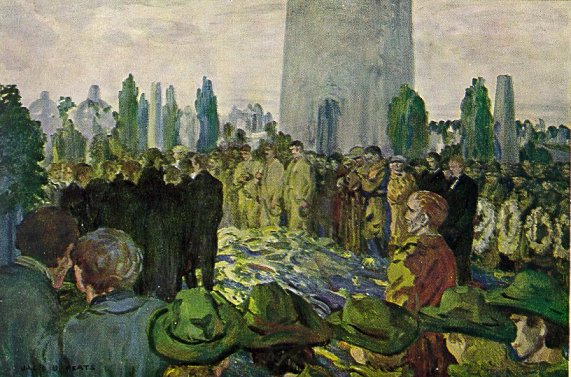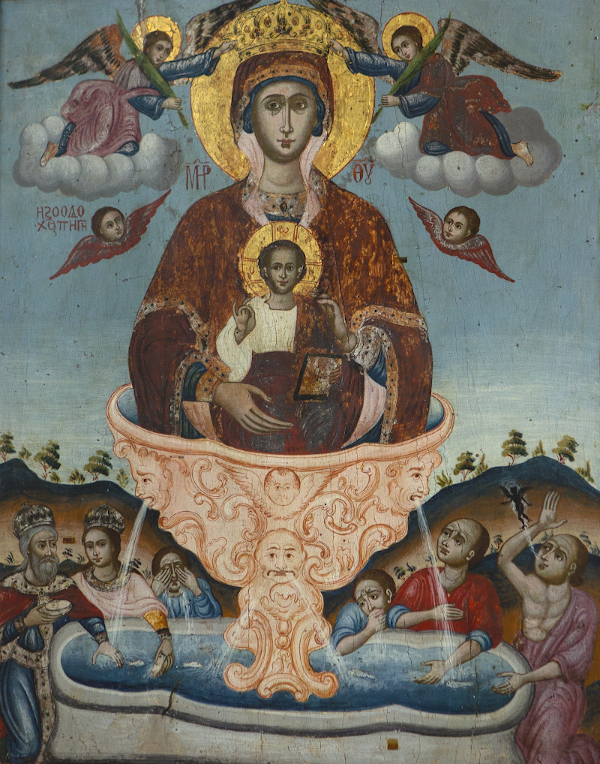The publication of this first novel by 26-year-old Fatima Daas has generated much media excitement in France, for reasons that have little to do with the quality of the work itself. Daas has attracted attention for breaking taboos. She grew up in the Paris suburb Clichy-sous-Bois, best-known as the site of major rioting in 2005 which provoked Sarkozy’s comment about cleaning the place up with a Kärcher, or high-pressure water hose. The riots had been sparked by the death of two boys who were electrocuted at a Clichy substation when they were hiding from police. Daas is French – she was born in another Paris suburb – but her parents are Algerian and all her family, apart from her two sisters and her parents, live in le pays, as Algeria is commonly referred to. Daas is a practicing Muslim. She does not wear the veil and prefers chunky jewellery and red lipstick. She is openly gay though acknowledges the problems this poses her in her religion.
So it is worth noting two things: the novel itself is impressive and does not sit easily in any box, and the author has been wary about her warm welcome from the literary establishment:
What affected me (after the two boys died) was the aftermath. I had the impression we couldn’t change this image of the banlieue. At college I put all my energy into wanting to change the negative image people had of Clichy-sous-Bois, I often said it was up to us to show we were not people who torched cars. I realized it wasn’t just up to me to do everything to change the way people see the banlieue; just like I don’t have to say, because I am a Muslim, I break with the terrorists. It is not up to us to change the images and perceptions others have of us, it is up to people to change how they see things. I don’t owe anyone anything. Not Clichy, not anyone.
Les Inrockuptibles, 19 August 2020
I called myself a writer very early on and I was supported by my classmates in Clichy. That gave me a lot of strength, to be encouraged like that. Then over time I undid certain things. I do not want to incarnate success, I do not want to be a symbol, ‘the chick from the banlieue who made it’, because that would mean writing is exceptional when you come from Clichy-sous-Bois. I am tired of having to be either those who do nothing, who are violent, or ‘those who make it’.
Elle, 28 August 2020
Evidence that the novel deals with difficult issues, acknowledges contradictions exist, and offers no easy solutions can be sought in the controversy that has followed its publication. In September Daas appeared on France Inter, and in response to the question: Do you believe it is a sin to be a Muslim and gay, she said: ‘Yes, yes I do’. For anyone who has read her novel there is nothing surprising in this statement. The conflict between Islam and homosexuality is one of the subjects explored with care and subtlety. But to hear it spoken on the radio at 7am, ‘while people are brushing their teeth, it can be a surprise’, as Mediapart put it. On Mediapart’s A l’air libre, Daas looked genuinely troubled by the whole furore, and in particular to being catapulted into the role of a public figure making pronouncements about Islam. She insisted that life was full of internal conflicts and certain things could not be resolved but that did not stop her from being a Muslim and gay. This controversy has not settled, nor will it given the atmosphere in France right now. Daas has avoided further media interventions. To her credit she seems more interested in writing and has no intention or desire to be a spokesperson for any cause or debate the media wants to pull her into. She is outspoken on many issues, but on her own terms.
La petite dernière – ‘the little last one’ or ‘the youngest’, though neither are satisfactory for the term is used for the youngest child, specifically a girl, and is one of endearment – appears autobiographical because the protagonist is also called Fatima Daas, grew up in Clichy and when we meet her she is 30. It is important to note here that Fatima Daas is a pseudonym. The author has called it a work of ‘autofiction’, a familiar genre in France, but how much is auto and how much fiction in any given novel depends very much on the writer.
For much of the novel we are with the protagonist aged 30, though we cut back and forth to events in her past, from childhood to recent history. Each chapter runs to no more than a few pages. The novel is written in the first person, with every chapter beginning with the line ‘My name is Fatima Daas’. Often the next lines repeat themselves too, though always with a significant if subtle variation. We return to the same themes and get to know the salient facts of her life that influence her sense of who she is: Islam, her relationship with the religion, the meaning of names and words, the significance of certain events and people. Statements recur, in various forms: I am Algerian. I am French. I am from Clichy. I am the youngest child. I am asthmatic.
The cumulative impact of the familiar refrain of each chapter opening is to create the impression of the protagonist seeking to make sense of herself. It also gives momentum to the prose, not unlike the chorus of a song. This quality of the writing has been described as ‘rapping’ by some critics, but it reads more like verse, though not with a fluent or balanced cadence – it is clipped, and captures the protagonist’s own speech patterns. Her asthma is serious and she recounts episodes from her childhood when she visited doctors and took classes that taught her how to breathe and deal with attacks. In adulthood she continues to have a complicated relationship with speech: the physical act requires effort, brings some discomfort so she must force words out, and sentences have to be short. On the occasions when we do have blocks of paragraph or dialogue it is usually someone else speaking, or the words of her prayers, which feature throughout and provide a total contrast in rhythm and language.
Though the story does not reduce to simple summary, one is never in doubt about what is happening. Daas pares down her descriptions to the bare minimum. A great deal happens, but all is recounted episodically and we jump around in time within a few lines. Daas is the last child of three girls and not the son her parents had hoped for. She grows up a tomboy and finds school easy. The relationship with her parents is full of silent conflict. More dramatic scenes involve friends, and her first girlfriends, and clashes with teachers. There are some passing references to moments that impact her development as a writer, though only elliptically. She also describes her solitary moments praying, quoting at length various Muslim prayers. Nothing is resolved exactly, by the end of the novel, but it does conclude with the promise that Daas is writing a novel and may, finally, manage to communicate with her mother, whose portrait is more tender than that of her father, whom Daas cut out of her life in her twenties.
Religion, and Daas’s evolving relationship with it, is one central conflict. Early on she states:
My mother told me we are born Muslim.
But I think I have converted.
I think I continue to convert to Islam.I try to be as close as possible to my religion, to get closer, to make it a way of life.
I like finding myself on my prayer mat, feeling my forehead on the ground, seeing myself prostrated, submissive to God, to implore Him, to feel myself tiny before His greatness, before His love, before His omnipresence
La petite dernière is also a love story. ‘Nina Gonzales is the heroine of this story’, we are told midway through. But Nina only appears fleetingly, and we do not know what happens to her. All we can be sure of is the strength of Daas’s feelings for her, and how these have upturned her world. Here one of the few scenes of the two together, towards the end of the novel:
Nina lets me in, apologising.
I say I’ve seen worse.At Nina’s, there’s a little hallway of two metres that leads to her bedroom. In there the bed is unmade, under the bed there are cigarette butts, on her desk there’s a TV surrounded by books.
There’s a guitar and next to it clothes that she has left lying around.
I feel funny in Nina’s place and at the same time I feel good.There is something reassuring about this mess, as though I was finding my place, as though it was a bit my own place.
I have the pretention to think I will put order into Nina’s life, when there’s not any order in my own life, when I can’t even be arsed to tidy up my room, to make my bed, that at my age my mum still makes it for me.
With Nina by my side, I feel less weird. Less crazy. Less blocked.
The most impressive quality of La petite dernière is its restraint. So little is said about most things, but single phrases tell us or suggest to us a great deal. This is achieved through the quality of the writing. Every statement counts, and every statement is rich with meaning.
Given the subjects Daas engages with, and the very personal register she uses, I had expected a more conventional tell-all story. The novel is the opposite of this, and I was left instead with an impression of integrity. Daas is clearly wrestling with the difficult balance between fiction and reality, and how much she will allow herself to say. This integrity is inevitably reminiscent of Annie Ernaux’s work. Daas quotes a passage from Ernaux’s novel Passion simple when she asks Nina if she could write about her, to which Nina offers no clear reply:
All this time I had the impression I was living my passion in a novelistic form, but now I don’t know in what form I am writing, if it is the form of a witness, like the accounts written in women’s’ magazines, or the form of a public witness statement, or even that of a text commentary.
I do not want to explain my passion – that would be like treating it as an error or an anomaly that has to be justified – I just want to set it out.
The French literary establishment has poured praise on the book, uncritically and unanimously celebrating the author as a ‘revelation’ with ‘intrepid prose’, as if to sidestep the main point Daas makes in La petite dernière that she became a writer not because of this literary establishment, certainly not with its help, but despite it. This is made clear in passages such as this, recounting an incident in college:
My name is Fatima Daas.
Before allowing myself to write, I satisfied the expectations of others.
After college I went to hypokhâgne, to prepare for a literary degree.
That’s what the good students do.
They go into medicine, or in prépa, or to Sciences Po.
For several months, I imitate my classmates.
I must:
Work several hours after each day of classes.
Learn dates and definitions by heart.
Take oral exams, read and comment on texts written exclusively by straight white cisgender men.
I arrive at my first class of the day, on a Wednesday. It’s eight thirty.
My Spanish teacher hands us back our homework. He keeps a hold of my copy. He looks at me with his big glasses.
– Mademoiselle Daas, would you please step outside with me a moment?
I get up and push my chair under my desk.
I can feel his impatience.
I don’t have the time to take my jacket.
I follow him, like an idiot.
He’s already outside, the door is closed.
Two, three students watch me as I leave.
I am wearing a T-shirt and I feel the wind on my arms, my hairs stand on end and it tickles me.
– So… Mademoiselle Daas (he says this with a good strong voice, looking at me straight in the eyes), I won’t do anything, you can relax, I just want to know the truth (he lets time pass to create a pathetic suspense). Who did your work?
I don’t really understand, so I say with a smile, my homework?
He says yes, your homework. Who did it in your place?
Sometimes, when people doubt me, I doubt myself, it’s funny, I invent situations to prove them right, but this time I didn’t want to because the work was easy and I didn’t enjoy doing it.
I said nothing.
I hoped he would tell me it was an April Fool’s joke in February, something, but he wasn’t the type of guy to crack jokes. I carried on believing he would eventually catch himself, that he would sense, from my silence, that it was all one big fucking joke.
He carried on with his mad story:
– OK, fine, who helped you?
I was getting tired, but I did reply:
– I love Spanish. I had 8/10 on average last year and I got 16 in the bac.
Then I realized that proving, demonstrating, making myself legitimate, showing what I was worth was not what other students had to do, the students who were all inside, in the warm. Nobody had to argue for ten minutes, in a T-shirt, in the cold, to prove they had deserved 17/20.
A month later I stopped preparatory classes.
I didn’t go into medicine.
I didn’t enter Sciences Po.
I wrote.
Daas did not choose Sciences Po, and it certainly did not choose her. She has since chosen not to play the designated role of ‘the chick from the banlieue who made it’. All of this makes her path harder, as does her unwillingness to iron out the conflict she sees between her religion and her sexuality. This has made for a fine first novel.
Read on: Natasha Pinnington’s engagement with the experimental life-writing of Annie Ernaux.










